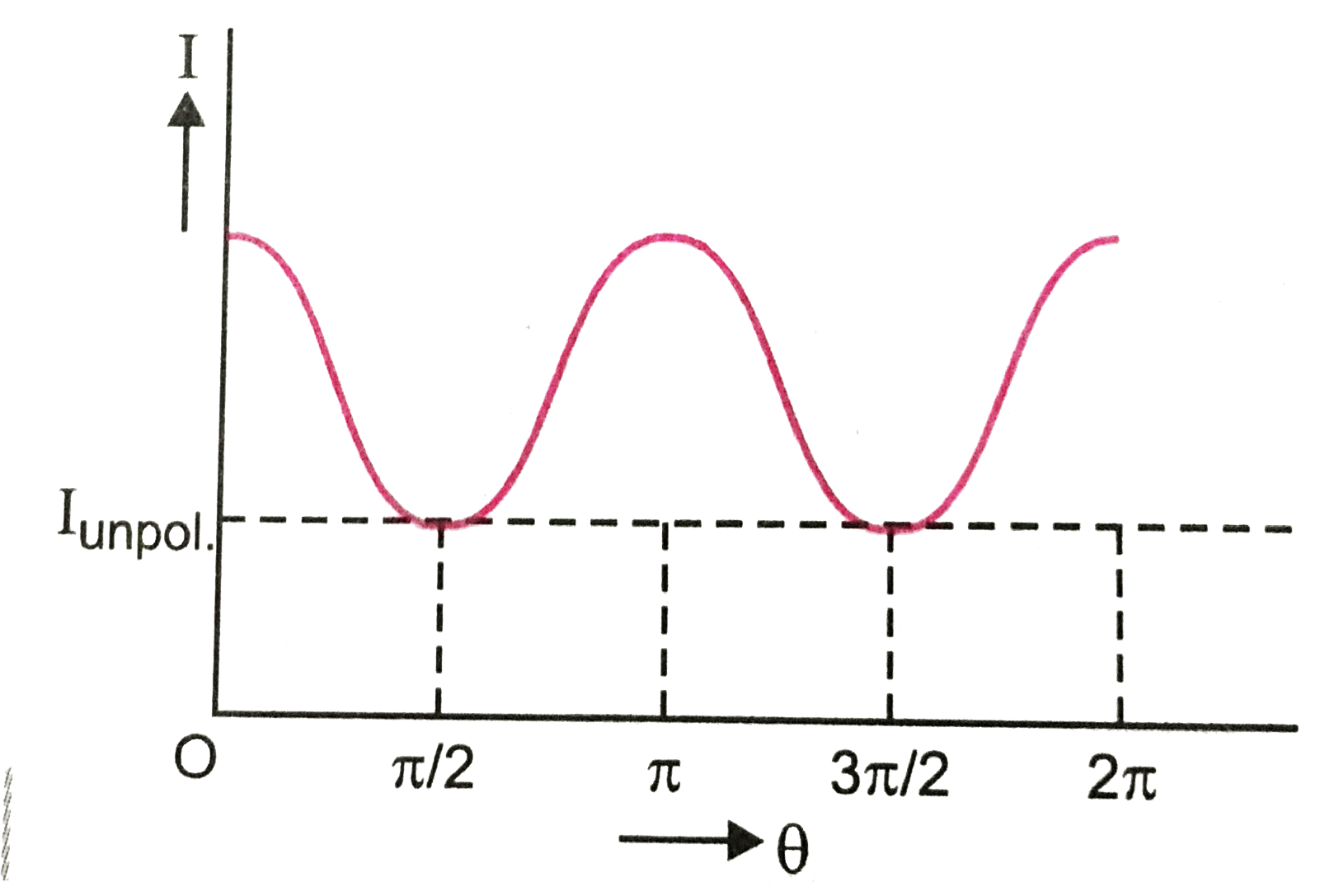A partially plane polarised beam of light is passes thorugh a polaroid. Show graphically the variation of transmitted light with angle of rotation of polaroid.
According to Law of Malus,
As the beam is originally partially polarised, therefore resultant intensity of transmitted light
is .
The veriation of transmitted light with angle of rotation of polaroid is shown in Fig.

Topper's Solved these Questions
- BOOK - PRADEEPCHAPTER - OPTICSEXERCISE - Very short answer question5videos
OPTICS
- BOOK - PRADEEPCHAPTER - OPTICSEXERCISE - very short answer questions1videos
OPTICS
- BOOK - PRADEEPCHAPTER - MAGNETIC EFFECT OF CURRENT AND MAGNETISMEXERCISE - Competition Focus (Multiple Choice Questions)2videos
MAGNETIC EFFECT OF CURRENT AND MAGNETISM
Similar Questions
(a) When an unpolarised light of intensity I0 is passed through a polaroid, what is the intensity of the linearly polarised light ? Does it depend on the orientation of the polaroid ? Explain your answer.
(b) A plane polarised beam of light is passed through a polaroid. show graphically the variation of the intensity of the transmitted light with angle of rotation of the polaroid in complete one rotation.View SolutionAn unpolarized light with intensity 2I0 is passed through a polaroid. The resultant intensity of the transmitted light will be
View Solution
Knowledge Check
- Question 1 - Select One
Rotation of plane polarized light is measured by
AManometerBPolarimeterCViscometerDRefractometer - Question 2 - Select One
Plane polarised light is passed through a polaroid. On viewing through the polaroid we find that when the polaroid is given one complete rotation about the direction of light
AThe intensity of transmitted light gradually decreases to zero and remains zeroBThe intensity of transmitted light gradually increases to maximum and remains maximumCThere is no change in intensityDThe intensity of transmitted light is maximum and zero two tirties during rotation - Question 3 - Select One
Plane polarised light is passed through a polaroid. On viewing through the polaroid we find that when the polaroid is given one complete rotation about the direction of light
Athe intensity of light gradually decreases to zero and remains at zeroBthe intensity of light gradually increases to a maximum and remains maximumCthere is no change in the intensity of lightDthe intensity of light varies such that it is twice maximum and twice zero
(a) What is linearly polarised light ? Describe briefly using a diagram how sunlight is polarised
(b) Unpolarised light is incident on a polaroid. How would the intensity of transmitted light change when the polaroid is rotated ?View SolutionLight from an ordinary source (say a sodium lamp) is passed through a polaroid sheet P1. The transmitted light is then made to pass through a second polaroid sheet P2 which can be rotated so that the angle θ between the two polaroid sheets varies from 0∘ to 90∘. Show graphically the variation of intensity of light transmitted by P1 and P2 as a function of angle θ. Take incident beam intensity I0. Why does light from clear blue portion of sky show a rise and fall of intensity when viewed through a polaroid which is rotated ?
View SolutionUnpolarised light of intensity I is incidnet of the polaroid. What will be the intensity of light transmitted by the polaroid?
View SolutionIf polarised light of intensity I passes through a polaroid whose pass axis makes an angle θ from the vibration axis of polarised light, the intensity of emergent light is I'=Icosθ.
View SolutionDraw the graph showing the variation of intensity of polarised light transmitted by an analyser.
View Solution

